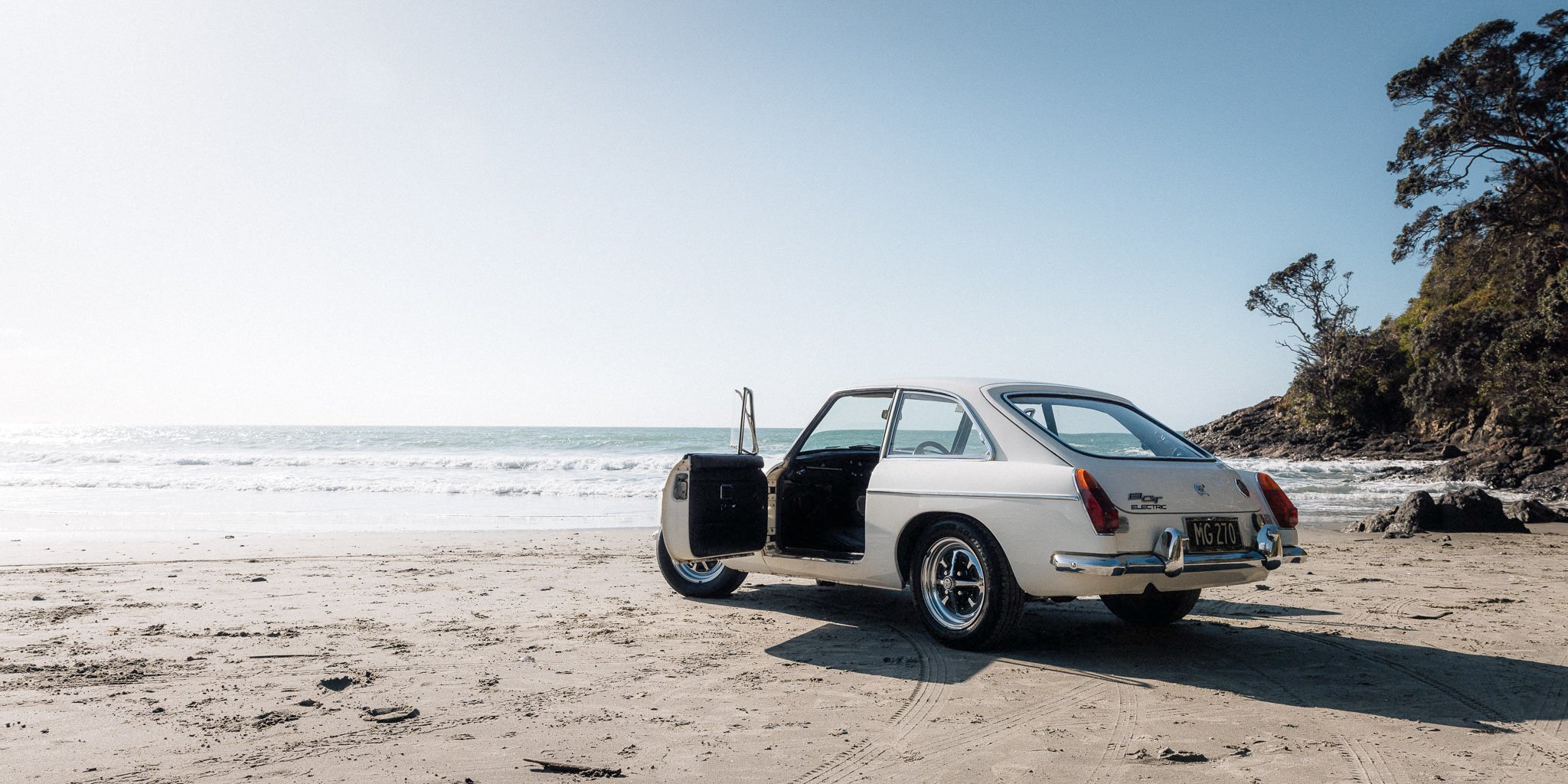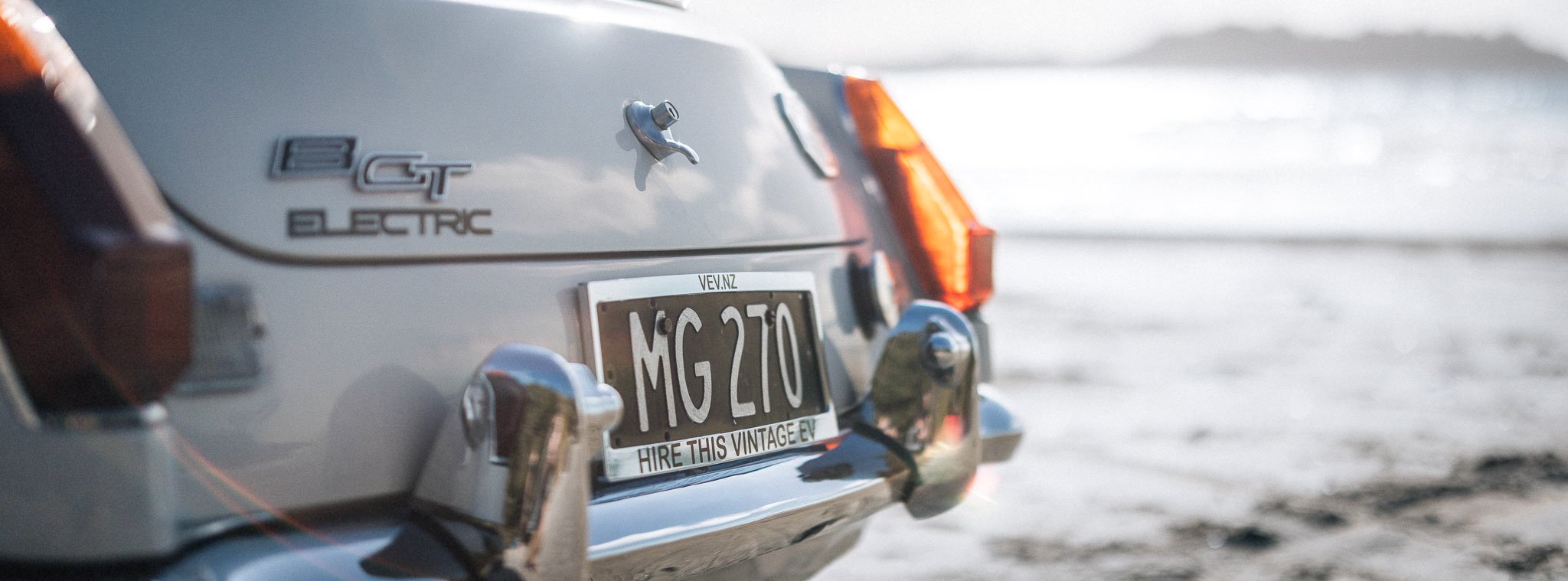
1970
MGB GT
Our first Vintage EV car available for rental is a beautiful MGB converted by our New Zealand partner.
The MGB GT has been converted to electric using a Hyper 9 motor and Tesla batteries.
Keen to know more? See the techie details below!
-
Drive in style, but with all the zippiness of electric. You must be able to drive a manual transmission to drive this car. Though the transmission is like nothing you’ve ever driven. You can change gears as normal but can’t stall the car. You could literally start and stop the car in any gear clutch fully out.
-
The original interior takes you back in time with black leather seats. The car is functionally a two-seater, though the hatchback gives you space for your luggage.
-
Yes! we have those, for driver and passenger.
-
Enough for a great blat around Waiheke Island. Please don’t take the loop road to Man O War and Stony Batter. This puts the sports car in danger on an unsealed viciously jagged road. Extra charges and penalties would apply were you to venture out there. I reckon just avoid it.
The Techie details for ev heads
The 1970 MGB GT is fitted with a Netgain Hyper 9 AC motor 88kW and this is matched to a Netgain SME inverter / controller. The controller heats up significantly so there is an additional chill plate mounted to the inverter which is water cooled via a small water pump and radiator. This SME controller is programmable which means we can change the throttle maps, regen rates, fault records etc.
The batteries are comprised of 5 Tesla Model S battery modules. Each module is nominally 22.8V, and 5.3kWh. These modules have the Tesla BMS board removed and replaced with a card picking up the battery voltage taps and feeding into a remote BMS. Overall pack voltage is 120V nominal. Although there is a facility for battery water cooling, this is not required. This does limit the vehicle from being fast charged.
The BMS is a TSM model with a main controller on the front battery pack and a satellite on the rear. The BMS is programmed to the car.
The charger is a 3.3kW TSM2500 unit with a TSM EVCC charger controller. The controller also provides the function to communicate with the J1772 charger plug.
The charger, EVCC, BMS, and SoC gauge are all on a separate CANBus. So, for example the EVCC takes its high and low voltage cut outs directly from the BMS. There is also a relay that turns the drive function on and off when it is charging to avoid drive away. This relay is switched by the BMS.
The main contactor box is under the plate with the charge plug. It has the main HV contactor, high voltage/low amp fuses, a HV relay controlling the DC DC converter, the key input relay and the drive away relay.
There is a DC DC converter mounted on the back of the battery box that supplies the 12v battery. It is a TSM unit set to work across the working voltage range of the battery pack. There is a main isolating switch in the driver’s side cockpit. There are other isolating switches on the battery boxes, but this is the better one to use as it divides the batteries into safer voltages, 75v and 50v nominal.







